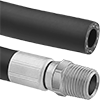Filter by
Thickness
Shape
Color
Mount Type
Hardness
OD
Thread Size
ID
Maximum Temperature
Performance
Minimum Temperature
DFARS Specialty Metals
Cell Type
Building and Machinery Hardware
Raw Materials
Fastening and Joining
Sealing
Material Handling
Fluid Handling
Fabricating and Machining
Electrical
Safety Equipment





























































